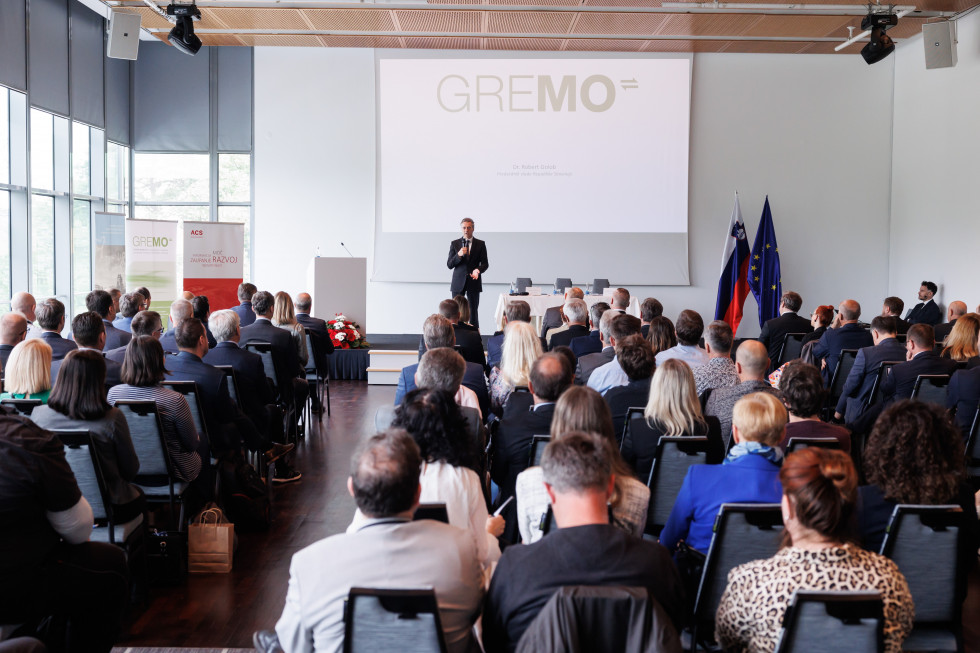Prime Minister: Up to EUR 200 million of state support allocated to the GREMO development project

Prime Minister dr. Robert Golob | Author Nebojša Tejić/STA
The Government of the Republic of Slovenia recognised GREen MObility, i.e. the Mission of the green and digital transformation of the Slovenian automotive industry, as a model example for the integration of economy, science, and the state. The Prime Minister signed a strategic partnership agreement with the Slovenian automotive cluster on behalf of the government.
"The government is very serious about investing in innovation. Innovation in areas where Slovenia excels and can achieve the highest added value. By increasing added value and boosting employment, we are raising the standard on which our entire society is based," emphasised dr. Golob after signing the agreement. The signatories of the commitments set out in the agreement are unanimous that Slovenia urgently needs a partnership between the state, science, and the economy in order to strengthen its competitive position on the global market. Additional investments in research and development and the industrialisation of new solutions should also be strengthened. In this way, our automotive industry will be able to successfully realise the goals of the GREMO Mission, and significantly contribute to the development of the state based on the active support of the government.
The Prime Minister further added that the EUR 200 million for the GREMO development project is to supplement other state investments in the automotive industry. He believes that the success of the GREMO Mission will attract additional funds. The state also has big plans for the development of the charging infrastructure for electrified vehicles.
Moreover, dr. Golob highlighted that our gross domestic product is based on industry. Therefore, it is important to focus on its transformation. He is convinced that the automotive industry is extremely propulsive in terms of technology, as well as in digital and green transformation: "The GREMO mission is based on tangible results. It draws upon knowledge; without knowledge there can be no progress. Our companies have managed to connect to the Slovenian automotive sector on their own and without any coercion, which is quite unique in Slovenia, as well as in Europe. For me, this is the greatest value recognised in the GREMO Mission."
With the GREMO Mission, the Slovenian automotive industry points to a path for a clear strategy and ambition for future development. It places the greatest emphasis on the increasingly rapid move towards electromobility, i.e. the transition from the production of components and systems for internal combustion engines to the development and production of components, systems, and technologies for electric and electrified vehicles. It increases its competitiveness through accelerated digitisation, robotisation, and automation, as well as through a significant reduction of the environmental footprint of production and business processes. Consequently, our automotive companies are achieving key breakthroughs in their segments and leading market positions on the global market. Since it is the first joint development plan of its kind for the entire economic sector in Slovenia, and serves as a model for other industries, the GREMO Mission is also supported by the government, which became acquainted with the industry’s bold plans last year.
Above all, the automotive industry has joined the science and economic sectors and established four large research and development projects involving major consortia on the completely new foundations of common target development, where small and medium-sized companies and research institutions participate intensively together with large companies in a leading role.
The business result targets up to 2030 clearly indicate the further stable growth of the Slovenian automotive industry. By 2030, sales will grow from EUR 3.6 billion in 2019 and EUR 5.1 billion in 2022 to EUR 7.8 billion. In 2030, added value per employee will increase from EUR 45,300 in 2019 and EUR 60,000 in 2022 to EUR 90,000. By 2030, the number of employees will increase from today's 20,000 to 24,000. Excellent business results will be reflected in payments to the state treasury, which will increase from the current EUR 220 million to EUR 350 million in 2030.

